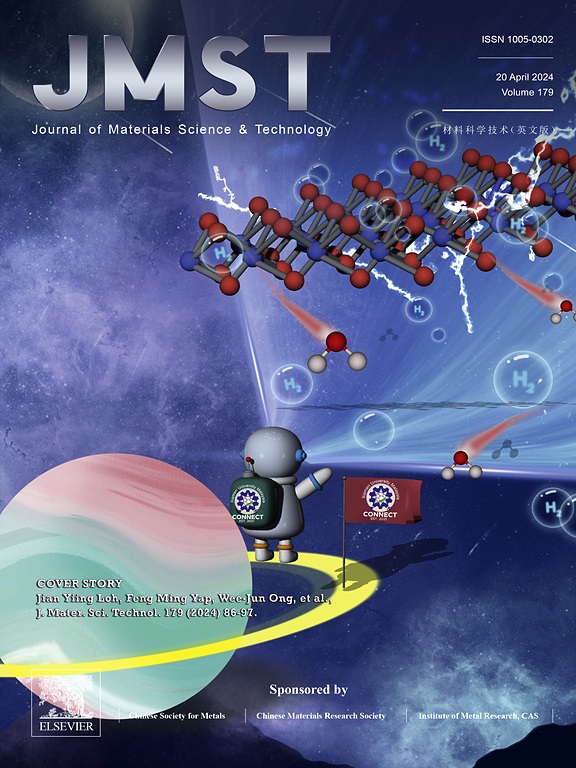Design and construction of metal sulfide/phosphide heterostructures with optimized d-band center and boosted electrocatalytic oxygen evolution
IF 14.3
1区 材料科学
Q1 MATERIALS SCIENCE, MULTIDISCIPLINARY
引用次数: 0
Abstract
Constructing heterostructures to regulate the electronic structure is an effective strategy for enhancing the oxygen evolution reaction (OER) electrocatalytic activity. Herein, we prepared heterostructured Co4S3/CoP3 (CoPS/NFF) electrocatalysts through a one-step phosphorization and sulfuration process. The synthesized electrode drives an overpotential of 190, 272, and 331 mV at 20, 50, and 100 mA cm−2 for OER in 1 M KOH alkaline media, respectively. These values outperformed those of monophase Co4S3 and CoP3 as well as the majority of transition metal-based catalysts previously reported. Furthermore, the Density Functional Theory (DFT) calculation results show that charge redistribution occurs at CoPS/NFF heterogeneous interfaces, which facilitates charge transfer and improves catalytic activity. The CoPS/NFF with heterostructure optimizes the adsorption strength of oxygen-containing intermediates (*O, *OH, and *OOH) by appropriately adjusting the d-band center energy level, thereby reducing the energy barrier of OER. This work provides a new perspective on rational design strategies for efficient transition metal-based electrocatalysts by inducing d-band center regulation through the construction of heterostructures.

优化d波段中心和促进电催化析氧的金属硫化物/磷化物异质结构的设计与构建
构建异质结构调控电子结构是提高析氧反应(OER)电催化活性的有效策略。本研究采用一步磷酸化-硫化法制备了异质结构Co4S3/CoP3 (CoPS/NFF)电催化剂。在1 M KOH碱性介质中,所合成的电极在20、50和100 mA cm−2下的过电位分别为190、272和331 mV。这些值优于单相Co4S3和CoP3以及大多数先前报道的过渡金属基催化剂。此外,密度泛函理论(DFT)计算结果表明,在cop /NFF非均相界面上发生电荷重分布,有利于电荷转移,提高了催化活性。具有异质结构的CoPS/NFF通过适当调节d波段中心能级,优化了含氧中间体(*O、*OH和*OOH)的吸附强度,从而降低了OER的能垒。本研究为通过构建异质结构诱导d波段中心调节来设计高效过渡金属基电催化剂提供了新的思路。
本文章由计算机程序翻译,如有差异,请以英文原文为准。
求助全文
约1分钟内获得全文
求助全文
来源期刊

Journal of Materials Science & Technology
工程技术-材料科学:综合
CiteScore
20.00
自引率
11.00%
发文量
995
审稿时长
13 days
期刊介绍:
Journal of Materials Science & Technology strives to promote global collaboration in the field of materials science and technology. It primarily publishes original research papers, invited review articles, letters, research notes, and summaries of scientific achievements. The journal covers a wide range of materials science and technology topics, including metallic materials, inorganic nonmetallic materials, and composite materials.
 求助内容:
求助内容: 应助结果提醒方式:
应助结果提醒方式:


